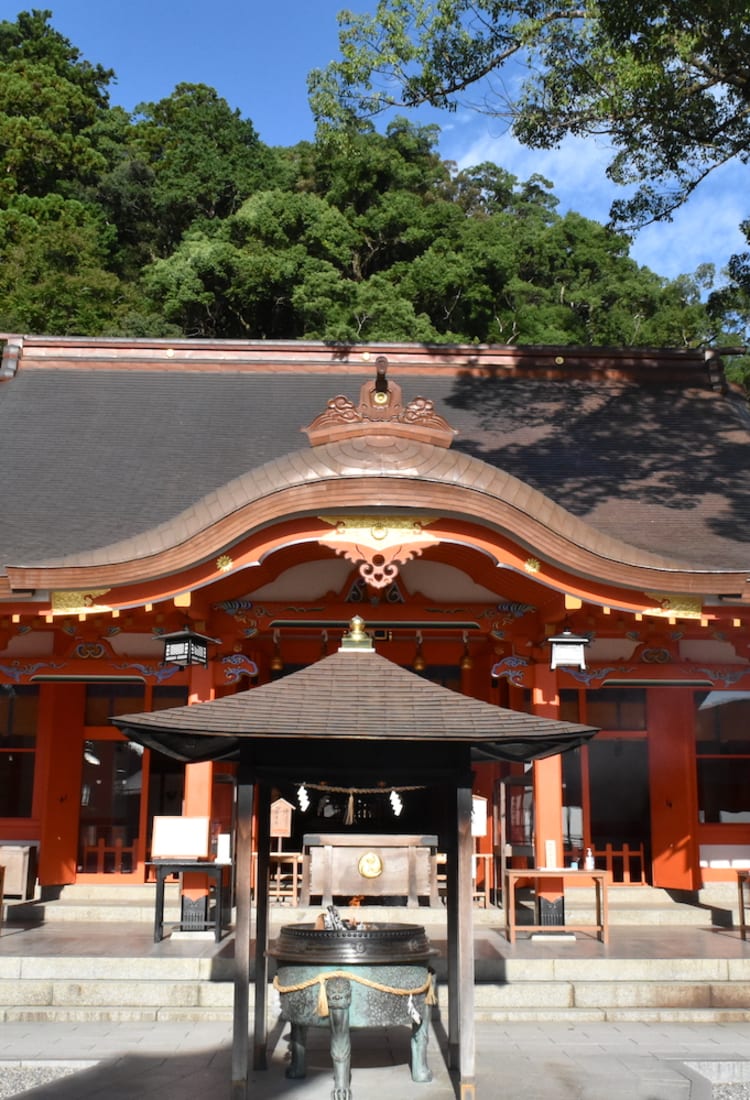

WAKAYAMA Nachisan A sanctuary of gods and a major destination on the World Heritage Kumano Kodo trail
A sanctuary of gods and a major destination on the World Heritage Kumano Kodo trail
Kumano Nachi Taisha Shrine is one Japan's most photogenic places. A powerful waterfall set in a primeval forest is the natural focus of this spiritual home for worshippers of the mountain gods.
Don't Miss
- Thundering spirituality at the base of Japan's tallest vertical drop waterfall
- Seeing the summer set ablaze at the Nachi Fire Festival
- An untouched cobblestone staircase believed to be a pathway to the gods
How to Get There
Located south of Nara, in Wakayama Prefecture , the Nachisan area is accessible by public transportation.
From Wakayama's Kii-Katsuura Station, take a 30-minute bus ride to Nachi-no-Taki-mae. For those traveling to the area from outside Wakayama Prefecture, the JR Kisei Honten Line will conveniently take you straight from Nagoya or Shin-Osaka down to Kii-Katsuura. The journey from Nagoya takes just under four hours and features commanding views of the Wakayama coastline along the way.
Quick Facts
Nachi Waterfall is the tallest waterfall in Japan, at 133 meters
The waterfall has been revered from ancient times by the Japanese as the home of a Shinto deity

Daimonzaka–the stairway to heaven
Leading from the base of the valley up to the spiritual sanctities of Kumano Nachi Taisha Shrine , Seigantoji Temple and Nachi Waterfall , this cobbled, gently sloping staircase offers around 600 meters of the Kumano Kodo Pilgrimage Route .
Sheltered under a canopy of cedar, camphor, and bamboo, you can also climb the 267 steps in a Heian-period kimono for the full pilgrim experience.


Kumano Nachi Taisha Shrine—a sacred stop-off
Tucked away up on the mountainside, Kumano Nachi Taisha Shrine is one of the spiritual stops on the Kumano Kodo Pilgrimage Route and is one of the three sacred shrines dotted along the ancient trail. The goddess enshrined here is Musubinokami. As this can be translated as “tie a knot,” she is known as the deity of marriage.

Seigantoji Temple–a beautiful Buddhist structure
Rubbing shoulders with the Shinto Kumano Nachi Taisha Shrine is the Buddhist Seigantoji Temple . The two spiritual homes housing different faiths used to be joined as one until politics forced the two religions to split in the 19th century.
Theology aside, the striking, sharp red edges of the temple's famous pagoda stand in the foreground of the roaring Nachi Waterfall. Seigantoji Temple is a magnificent sight that you should not miss.



Nachi Waterfall–an ancient water god
If you peer up at the top of the waterfall, you can make out zigzag paper hangings, tied to a rope strung a few meters above the cascade. These are known as shide and signify the dwelling of a god.
Japan's earliest records indicate that the waterfall has been worshipped as the abode of a Shinto deity since ancient times, and this explains the reason for Nachi Taisha and Seigantoji being built here in later times. Standing in front of such natural power will leave a lasting impression.



Nachi Fire Festival—purification through a festival of fire
Every year, mid-July sees the area lit by flame as the Nachi-no-Ogi festival is held. Beginning at Kumano Nachi Taisha Shrine , torch-bearers clad in white swing giant flaming torches to purify the ancient path leading to the waterfall. The event climaxes with twelve portable shrines set alight to a backdrop of chanting, smoke, and flame.






























































